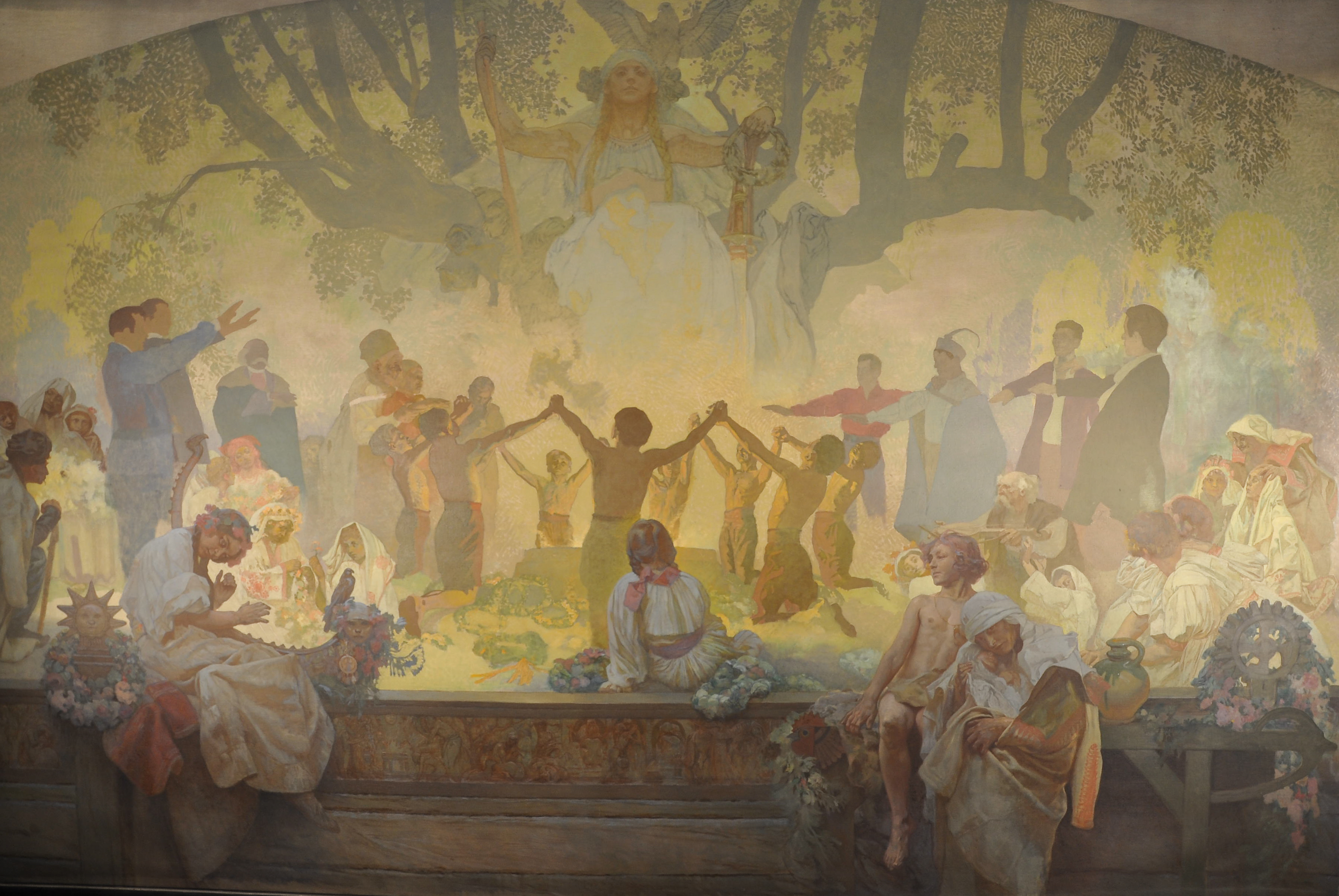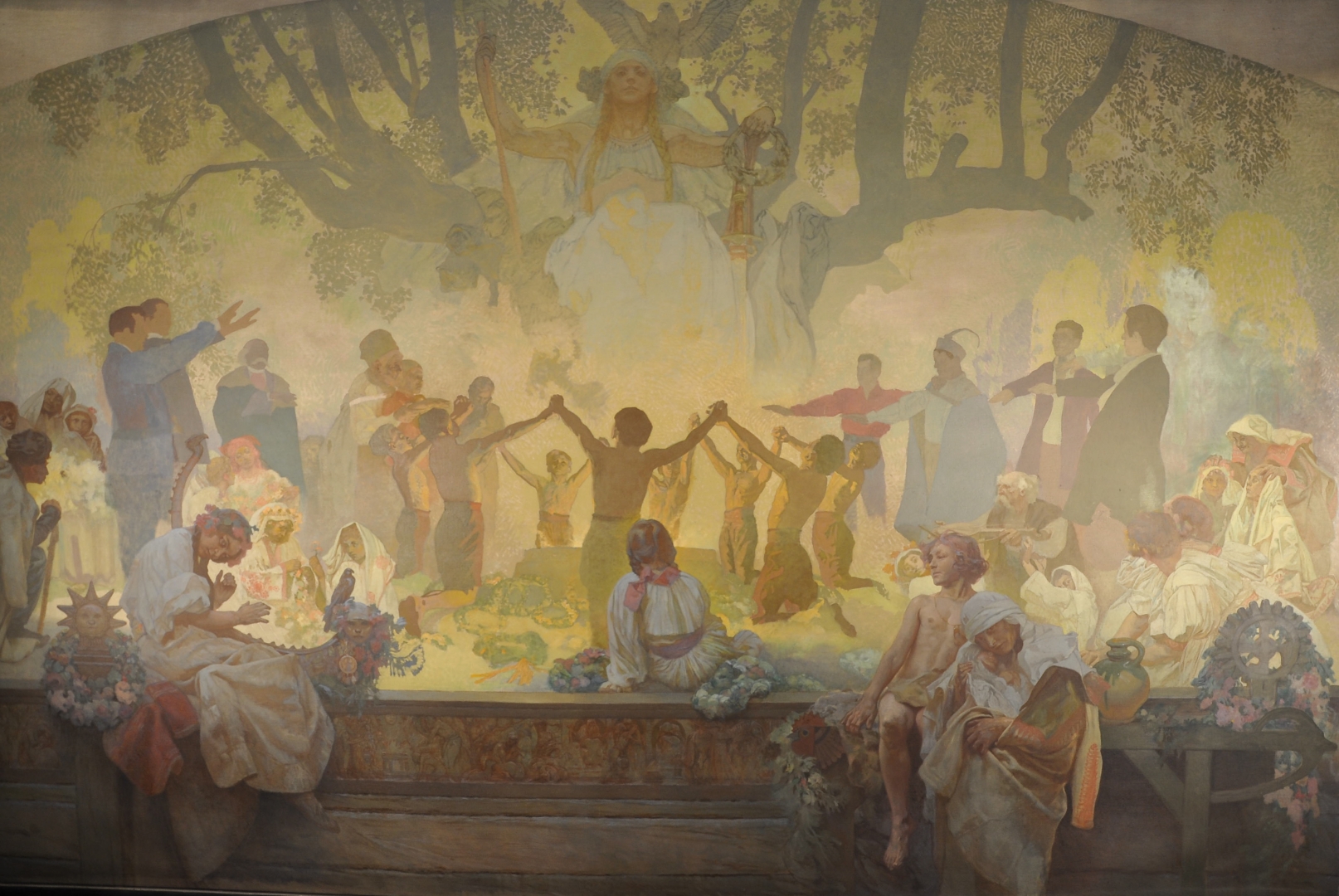THE OATH OF OMLADINA UNDER THE SLAVIC LINDEN TREE
According to Alfons Mucha, cruel moments arose after the Thirty Years' War ended. Recatholicization, centralisation and Germanization culminated in the 18th century under Maria Theresa and Joseph II. However, after a period of the most intense political and linguistic oppression, the Czech national revival flourished.
The people of Prague fought hard to restore their cultural and national identity. At the end of the 19th century, a progressive youth group, Omladina, has formed. The movement was accused of high treason, and in the 1894 trial, 76 people were prosecuted, 68 of whom were sentenced to a total of 96 years in prison. Among them were the future representatives of political and cultural life such as Alois Rašín, Karel Stanislav Sokol, Stanislav Kostka Neumann and others.
The painting depicts a sacred Slavic linden tree. Alfons Mucha used a real linden tree in the Žamberk region as a reference. In the fork of its branches sits mother Slavia. Young people kneel before her, swearing allegiance to the nation and mutual cohesion. To the left, in the background, stands an older man with a huge grey moustache - a figure from the history of Serbia reminding viewers that a similar movement also existed there. Sokol member takes the oath on the right.
The details of the faces of many figures were intentionally left out; Alfons Mucha avoided portraying the acting politicians of that time. In 1925 and 1926, when Mucha painted this piece, the criticism of his work culminated, and the resulting bitterness might have discouraged him from completing the painting.
Only the lower part of the scene is worked out in detail: on the left is a girl playing the harp, who has been modelled after Mucha's daughter Jaroslava. For the boy on the right, the painter used his son Jiří. Their companions embody youth: the future of the nation. According to Alfons Mucha, only a nation that knows its history and roots of its origins can live and work for the present and the future. On the right, the old guslar sings about the famous deeds of his ancestors and the youth listen. On the far right, we see the swastika - a symbol of the sun in motion - worshipped by the ancient Slavs and other pagan nations.

